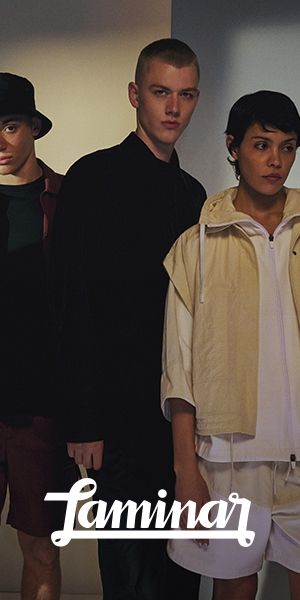
And what if running became the new streetwear?
Among running clubs, local shops and brands, trends still arise offline
May 21st, 2024
There are sports that represent an entire personality, that define better than any other detail the style or philosophy of life of an individual and at the same time contribute to shaping it. It is not known how one becomes a runner, only the addiction towards the repetitiveness of the gesture, the performance of fatigue, and the ecstasy of running are known. All qualities that have always accompanied one of the oldest sports disciplines of mankind, and which have now become a true trend of style and life. Running is not just about running 5 or 10 kilometers on asphalt, but a series of unwritten codes, a lifestyle, and a shared sportiness that has given new life to a very specific aesthetic, capable of combining minimalism and functionality. Additionally, like many trends that exploded during the restrictions of the Covid-19 pandemic, running has also emerged as a means of escapism to improve mental health, as well as to stay physically active. But its continuous growth has not been interrupted at all, on the contrary, it has gained more and more followers with every step.
If running shoes have already become welcome guests in web stores and shops usually dedicated to luxury or streetwear, and if it is impossible to walk for more than ten minutes without coming across a Salomon XT6 or a Hoka Clifton, now we must prepare for a total insistence of the running aesthetic in our lives. Moving from shoes to clothing is indeed an inevitable step for every sports brand that wants to become big, as seen with Nike and adidas as a reference. Just as bags and accessories are often the first step in creating a successful fashion brand, shoes are usually the first step for a sports brand. And every sneaker company that respects itself has always started with running. However, marathons, once the sport par excellence where the only possible aesthetic was that of fatigue and pain, have now become an opportunity for runners to express their personality, with special editions and unusual colors. The road becomes a catwalk, the 42 kilometers a long parade, the marathons a Fashion Week.
Running, in fact, has been able to create, like no other sport or group sports activity, close-knit and vertical groups and communities. Of course, compared to other disciplines, running involves much lower entry costs - in the end, all you need is a pair of comfortable shoes and a tracksuit - but it requires constant dedication, and these two characteristics are what make it perfect for creating a loyal community. Which, as a result, can sometimes slip into the ideation of a brand by and for those who are part of it, and then gradually expand its sphere of influence. Today, there are many brands or microbrands that populate this world - and trying to summarize them risks leaving someone out - but their impact goes beyond the simple design of Elastene shorts or thin tank tops. They represent a lifestyle linked to a city, a neighborhood, a single block but which has the power to quickly become global.
From Satisfy to Norda, from OVER OVER to District Vision, from UVU to Soar Running, many brands represent this minimal, slippery, nocturnal and urban aesthetic, which smells of speed and asphalt. There are those born from the bottom, like merch for a Running Club, or from the mind of an athlete who could not find the right compromise between style and performance during their races, or even as an extension of a life philosophy that embraces meditation, competition, and psychophysical well-being. Whether they are simple branded shirts or technically advanced outfits, there is a strong connection between all the brands in the scene. And even larger brands, which for a long time have dominated the market, and which have now chosen to shift towards a communication and product capable of intercepting these new communities. Collaborations with stores, running clubs, or other local brands are also not lacking, the easiest and most immediate way to establish oneself as cool and fashionable through association with those who truly are.
As it was in the previous decades for skateboarding and sneaker culture, what makes these phenomena so popular in a very short period of time is credibility and organicity. Two values that are not taken for granted in a sportswear landscape dominated by virality, sponsored content, and virtuality, and which instead thrive in an offline context, where recognition is limited only to those who are part of the circle, like a club whose access key must be earned through sweat and effort. There are no shortcuts, you cannot pay to get in. These limitations make running fascinating in its simplicity: if you run, you're part of it, otherwise you're out. And if you are part of it, you can wear its merch, which over the years has become a true status symbol, and share its values and hashtags. After all, in a world like fashion, where everything is for sale, what cannot be bought is priceless.










































.png)


.jpg)






